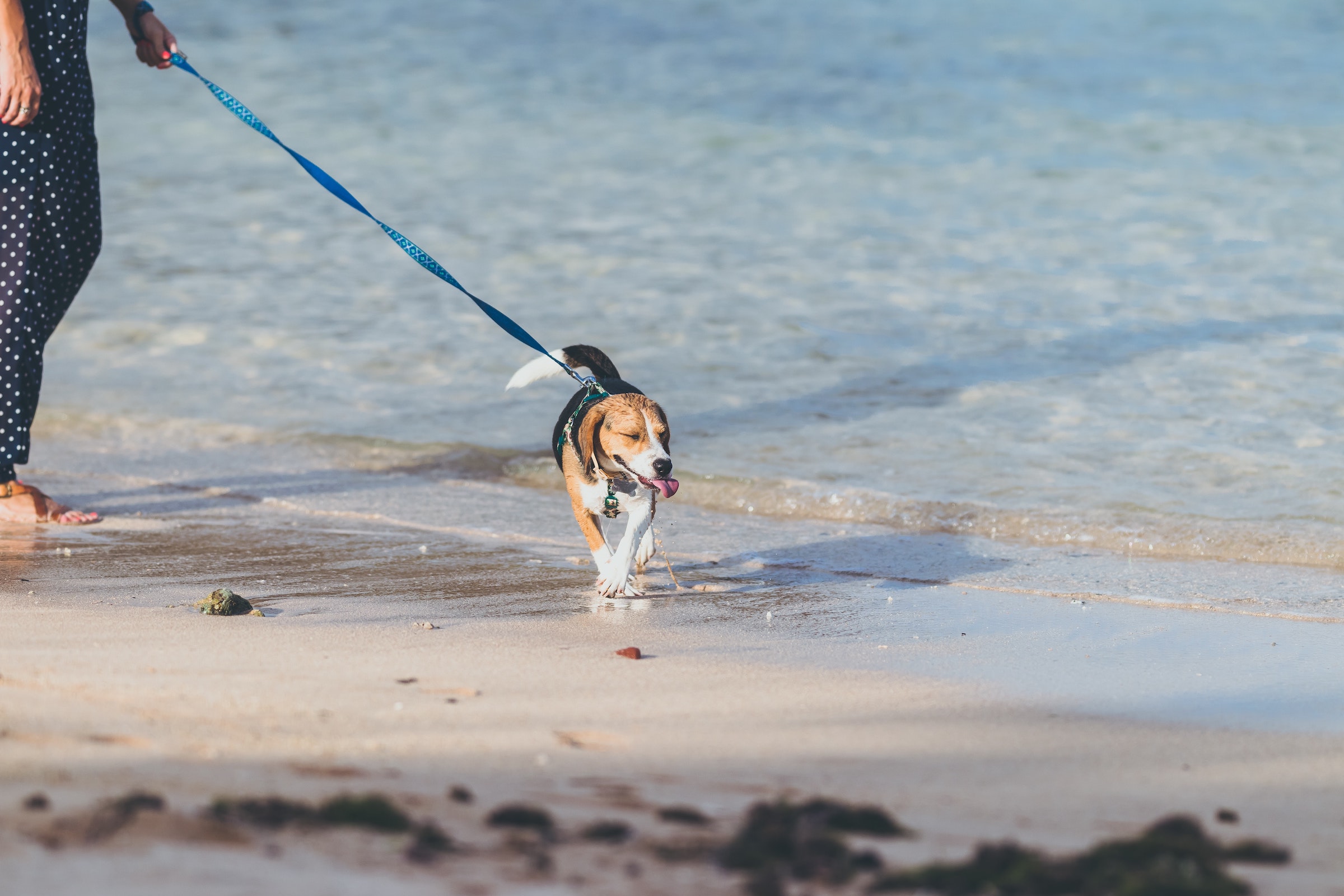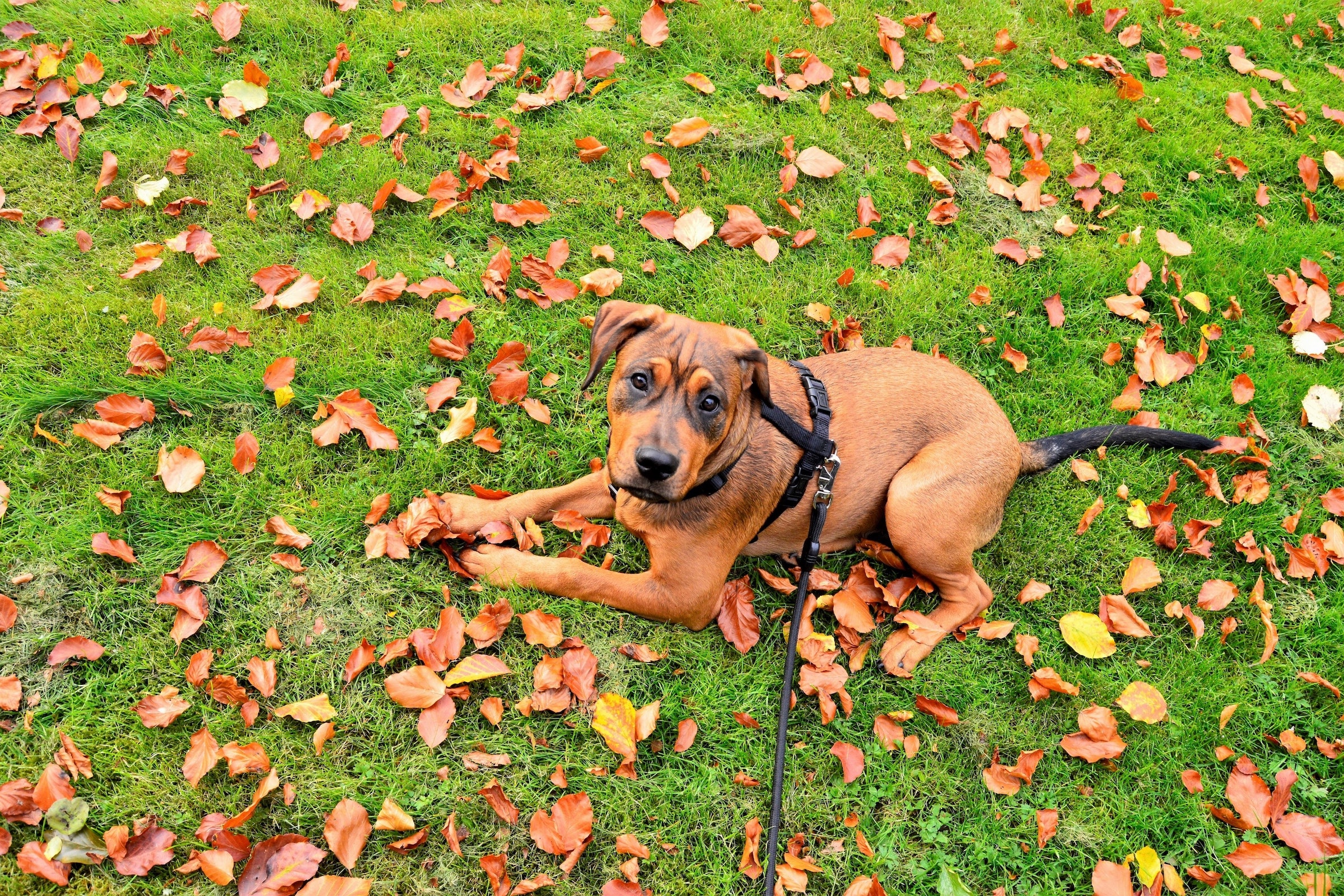Although different scenarios require different leash lengths, most pup parents don’t know exactly what to aim for. Some opt for retractable leashes in hopes of solving this problem, but it turns out that retractable leashes can do more harm than good when it comes to your dog’s safety and obedience.
Dog leash length depends on a variety of factors, including your dog’s behavior as well as their environment. However, there are a few other characteristics to think about when imagining the perfect leash. It may even be a good idea to invest in more than one lead — you never know when you might need a backup!

How long should a dog’s leash be?
While the specifics of “the perfect leash” vary from situation to situation, the American Kennel Club lists the standard leash length as six feet. At this length, your dog has some room to roam and explore without pulling against you, but the leash won’t be dragging on the ground, either. Keeping this in mind, these situations may require a longer or shorter leash, depending on the moment:
Leash length while walking
The standard six-foot leash length is meant for walking in less busy areas, such as suburbs or neighborhoods. In a place like this, your dog wouldn’t need to be more than six feet away from you, so nothing more is necessary. Any more length and control becomes a challenge.
If your dog’s a puller, you might think you’ll need a shorter lead, but the opposite is actually true. Canine instinct often encourages dogs to pull against pressure, so instead of pulling your pup along with you, reward them for walking with some slack in the leash. The moment they pull, stop walking!
For walks in more crowded or urban settings, a short leash, about four feet long, is ideal. When there are pigeons, people, and half-eaten snacks everywhere you look, every distraction can be a risk, especially in a fast-paced place like the city! Control is key, and having a short leash will make it that much easier.
Leash length while running
For the safety of both you and your fur baby, a short leash is also recommended for running. Since you’re moving faster, you may need to make quicker decisions — and your dog needs to be able to follow instantly. Tripping up another jogger isn’t how you’d want your run to go!
A short, hands-free running leash can give you more control by using your body weight for leverage. Your dog can’t yank the leash out of your hands when it’s secured around your waist, and they’ll probably have a hard time pulling, too.
Dog leash length for training
This inquiry doesn’t have one straightforward answer, as different training requires different levels of control. If you’re working on leash obedience while walking, you may want to start with a short leash and work your way up as your pup earns their freedom. It’s not just a reward thing — it’s a safety thing, too!
If you’re working on basic commands such as “sit,” “stay,” and “come,” a long lead — these tend to run between 30 and 50 feet — will be helpful. By attaching your dog to a lead, you’ll know they’re safe if they get distracted or disobey commands, but you still have the space to work on long-distance obedience.

Dog leash width and material
As important as a dog’s leash length is, it’s only one factor to think about when looking at leashes. Here are two other things to keep in mind: width and material.
Dog leash width
Several common leash widths are 1/2 inch, 3/4 inch, and 5/8 inch, all of which are ideal for standard leash lengths. Make sure the width you choose is comfortable in your hand and on your dog. Material that’s too heavy may drag down your dog’s collar or harness, which will make it a difficult walk. A leash that’s too light isn’t safe either, since strong dogs can get away if they feel the need to try hard enough.
Dog leash material
While the most common dog leash material is nylon, it’s not your only option. Nylon dog leashes are affordable, available in many colors, and are good quality, but they’re not the best option for dogs who tug on the leash or like to chew. Leather leashes, on the other hand, are a bit tougher on walks but smoother on your skin — no more rope burns from nylon! You’ve also got plenty of faux leather leash options if you’d prefer to stay away from animal products in your pet supplies.
When buying a leash for your beloved pet, it’s always safer to opt for something that feels comfortable to use. Don’t be afraid to browse your local pet store, either. It’s important to get to know the different leashes and lengths before you decide on just one — or a few! Different situations can call for different leashes, after all. It’s not one size fits all!



